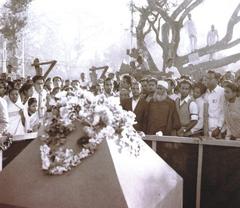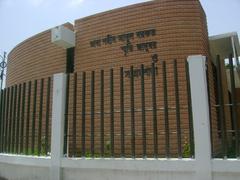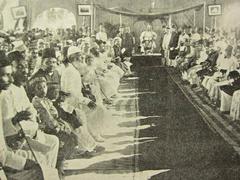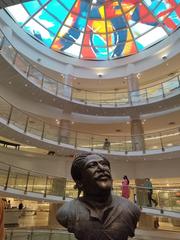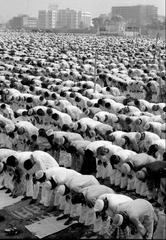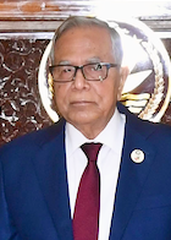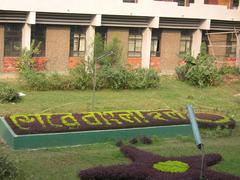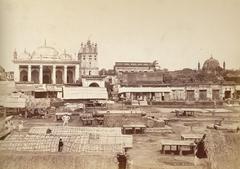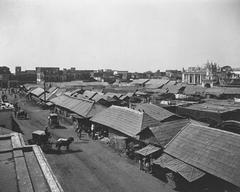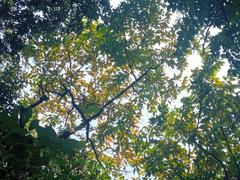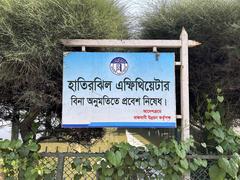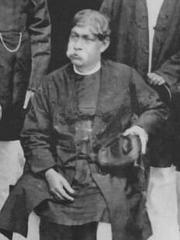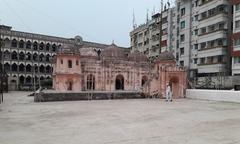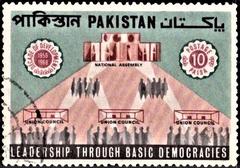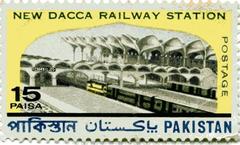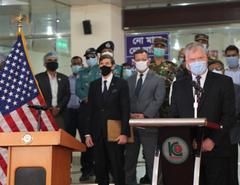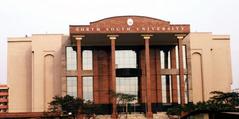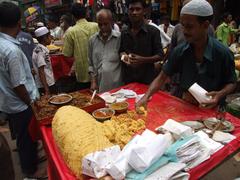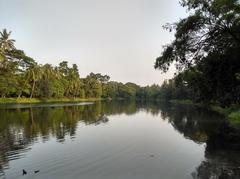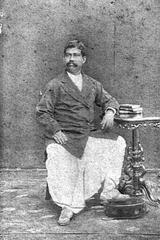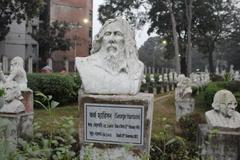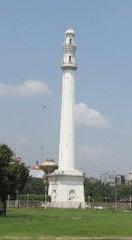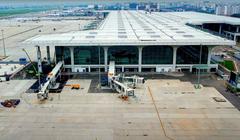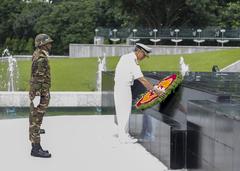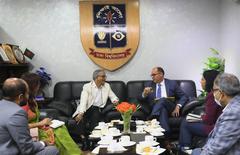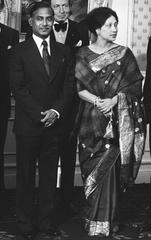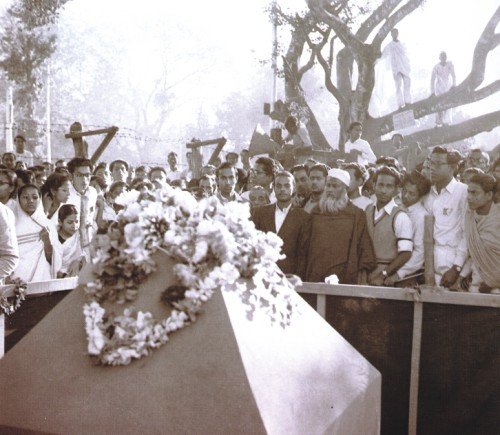
Central Shaheed Minar Visiting Guide: History, Tickets, Hours, and Tips
Date: 17/07/2024
Introduction
The কেন্দ্রীয় শহীদ মিনার (Central Shaheed Minar) in Dhaka, Bangladesh, is a monumental symbol of cultural and linguistic pride. It stands as a testament to the resilience and unity of the Bengali people, commemorating the sacrifices made during the Bengali Language Movement. On February 21, 1952, students and political activists protested against the Pakistani government’s decision to impose Urdu as the sole national language, leading to a tragic crackdown that claimed several lives (UNESCO). This day is now globally recognized as International Mother Language Day, emphasizing the importance of linguistic and cultural diversity. The Central Shaheed Minar, initially constructed overnight by students of Dhaka Medical College, has undergone several modifications and reconstructions to become the iconic structure it is today (Banglapedia). This guide provides a comprehensive overview of its history, cultural significance, and practical information for visitors, ensuring that your visit is both enriching and respectful.
Table of Contents
- [Introduction](#introductionintroduction)
- [History of Central Shaheed Minar](#history-of-central-shaheed-minarhistory-of-central-shaheed-minar)
- [Origins and Early Development](#origins-and-early-developmentorigins-and-early-development)
- [Initial Construction](#initial-constructioninitial-construction)
- [Design and Reconstruction](#design-and-reconstructiondesign-and-reconstruction)
- [Post-Independence Modifications](#post-independence-modificationspost-independence-modifications)
- [Cultural and Political Significance](#cultural-and-political-significancecultural-and-political-significance)
- [Preservation and Maintenance](#preservation-and-maintenancepreservation-and-maintenance)
- [Visitor Information](#visitor-informationvisitor-information)
- [Visiting Hours](#visiting-hoursvisiting-hours)
- [Ticket Prices](#ticket-pricesticket-prices)
- [Best Times to Visit](#best-times-to-visitbest-times-to-visit)
- [Travel Tips](#travel-tipstravel-tips)
- [How to Get There](#how-to-get-therehow-to-get-there)
- [Nearby Attractions](#nearby-attractionsnearby-attractions)
- [Accessibility](#accessibilityaccessibility)
- [Special Features](#special-featuresspecial-features)
- [Guided Tours](#guided-toursguided-tours)
- [Photographic Spots](#photographic-spotsphotographic-spots)
- [Special Events](#special-eventsspecial-events)
- [FAQ](#faqfaq)
- [Conclusion](#conclusionconclusion)
- [References](#referencesreferences)
History of Central Shaheed Minar
Origins and Early Development
The Central Shaheed Minar stands as a poignant symbol of the Bengali Language Movement. Its origins trace back to the early 1950s, marked by significant political and cultural upheaval in East Pakistan (now Bangladesh). The movement began in response to the Pakistani government’s decision to impose Urdu as the sole national language, disregarding Bengali, spoken by the majority in East Pakistan.
On February 21, 1952, students from Dhaka University, along with political activists, organized a protest to demand the recognition of Bengali as one of the state languages. The protest turned tragic when police opened fire on the demonstrators, resulting in the deaths of several students, including Abul Barkat, Abdul Jabbar, Rafiq Uddin Ahmed, Abdus Salam, and Shafiur Rahman. This day is now commemorated annually as International Mother Language Day (UNESCO).
Initial Construction
In the immediate aftermath of the 1952 killings, the first Shaheed Minar was constructed overnight by students of Dhaka Medical College. This initial structure was a temporary monument made of brick and plaster, later demolished by the police. The spirit of the movement persisted, and the demand for a permanent memorial grew stronger.
Design and Reconstruction
The design for a permanent Shaheed Minar was conceived by Hamidur Rahman, a prominent architect, in collaboration with Novera Ahmed, a renowned sculptor. Their modernist and traditional Bengali design features vertical columns symbolizing the mother and her martyred sons, with a half-circular column representing the mother with her arms raised in grief and protest.
Construction of the permanent Shaheed Minar began in 1957 but faced delays due to political instability and lack of funding. It was completed in 1963 and quickly became a focal point for cultural and political activities, symbolizing the resilience and unity of the Bengali people (Banglapedia).
Post-Independence Modifications
Following Bangladesh’s independence in 1971, the Shaheed Minar underwent modifications to enhance its significance and aesthetic appeal. In 1983, the monument was expanded to include a larger platform and additional sculptures, reflecting the broader struggle for linguistic and cultural rights. The surrounding area was landscaped to create a serene environment for visitors.
Cultural and Political Significance
The Central Shaheed Minar is a symbol of linguistic and cultural identity, representing the sacrifices made for the preservation of the Bengali language. It has become a site of pilgrimage, with thousands gathering annually on February 21 to pay respects and participate in cultural programs. The monument has also been a rallying point for various political movements in Bangladesh, symbolizing the ongoing struggle for justice, equality, and human rights (The Daily Star).
Preservation and Maintenance
Over the years, the Shaheed Minar has faced challenges related to preservation and maintenance due to environmental factors, vandalism, and neglect. Efforts by the government and cultural organizations aim to restore and preserve the monument. Recent initiatives include informative plaques, improved lighting, and guided tours to educate visitors about its significance (Dhaka Tribune).
Visitor Information
Visiting Hours
The Central Shaheed Minar is open to visitors year-round. The best times to visit are early morning and late afternoon to avoid the midday heat.
Ticket Prices
Entrance to the Shaheed Minar is free of charge. However, donations for maintenance and preservation are appreciated.
Best Times to Visit
The most significant time to visit is on February 21, International Mother Language Day, when the monument sees thousands of visitors and numerous cultural events.
Travel Tips
How to Get There
The Central Shaheed Minar is located near Dhaka University. It is accessible by rickshaw, taxi, or public transport from various parts of Dhaka.
Nearby Attractions
Nearby attractions include the Dhaka University campus, the National Museum, and the Curzon Hall. These sites offer further insight into the cultural and historical context of Bangladesh.
Accessibility
The Shaheed Minar is wheelchair accessible. Visitors with disabilities can easily navigate the site, although some areas may require assistance.
Special Features
Guided Tours
Guided tours are available and provide in-depth information about the monument’s history and significance. These tours can be booked in advance.
Photographic Spots
The Shaheed Minar offers numerous photographic opportunities, especially during cultural events and festivals. Early morning and late afternoon provide the best lighting for photography.
Special Events
Special events, including cultural programs and commemorations, are held throughout the year, with the largest gathering on International Mother Language Day.
FAQ
Q: What is the significance of the Central Shaheed Minar?
A: It symbolizes the sacrifices made for the Bengali Language Movement and represents linguistic and cultural identity.
Q: When is the best time to visit?
A: February 21, International Mother Language Day, is the most significant time to visit.
Q: Are there any entry fees?
A: There are no entry fees, but donations for maintenance are appreciated.
Q: Is the Shaheed Minar accessible for visitors with disabilities?
A: Yes, the site is wheelchair accessible.
Conclusion
The Central Shaheed Minar stands as a powerful symbol of the Bengali Language Movement and the sacrifices made for linguistic and cultural rights. Its history is a testament to the resilience and unity of the Bengali people, and it continues to inspire movements for justice and equality worldwide. The ongoing efforts to preserve and maintain the Shaheed Minar ensure that it remains a lasting tribute to the martyrs and a source of pride for future generations. Visit and explore this historic monument to connect with Bangladesh’s rich cultural heritage (The Daily Star).
References
- UNESCO, 2021, https://en.unesco.org/commemorations/motherlanguageday
- Banglapedia, 2021, http://en.banglapedia.org/index.php?title=Shaheed_Minar
- The Daily Star, 2021, https://www.thedailystar.net/opinion/news/shaheed-minar-symbol-our-identity-2047481
- Dhaka Tribune, 2021, https://www.dhakatribune.com/bangladesh/2021/02/21/shaheed-minar-a-symbol-of-sacrifice-and-heritage
